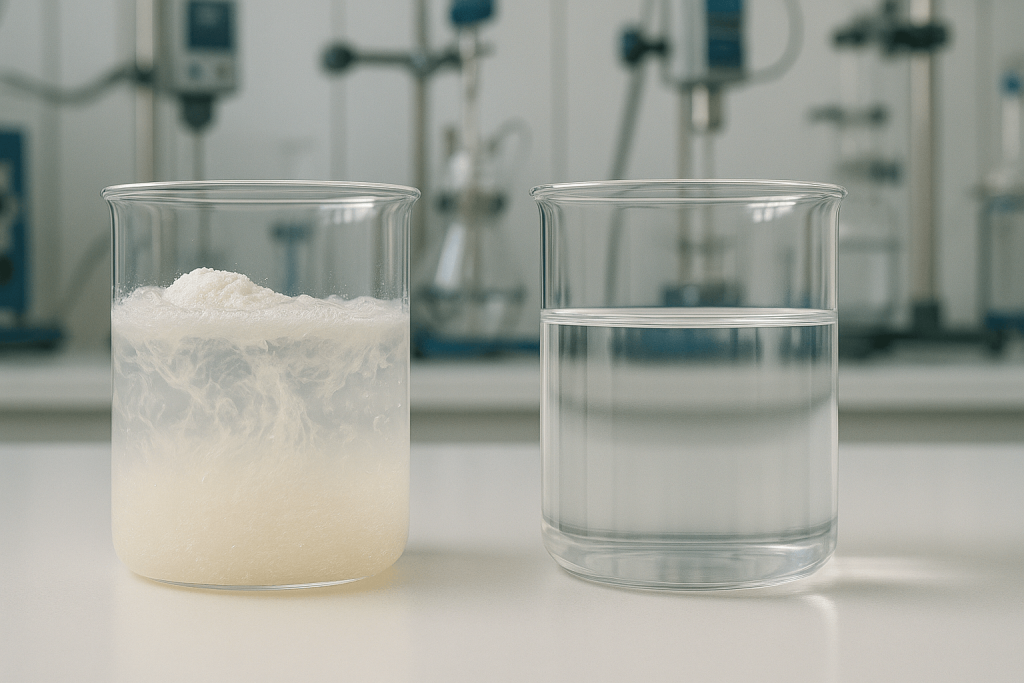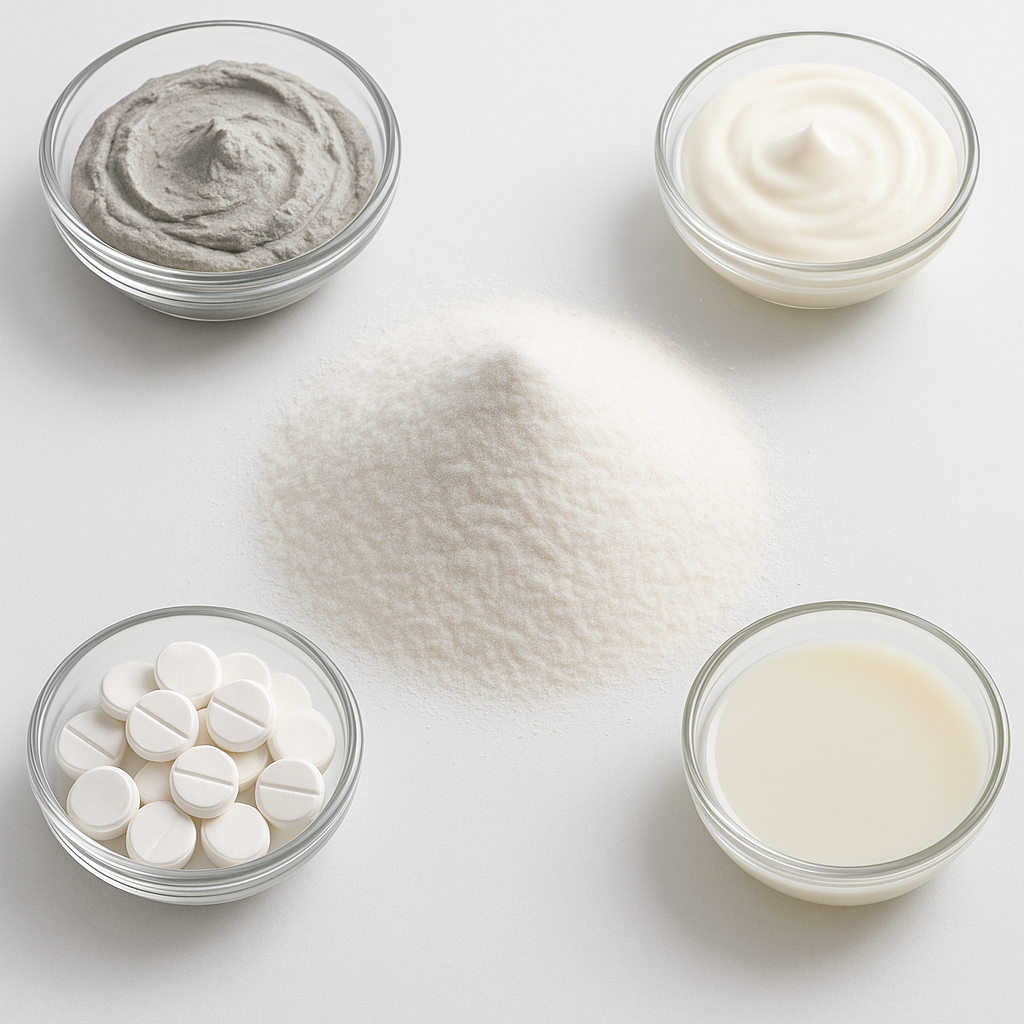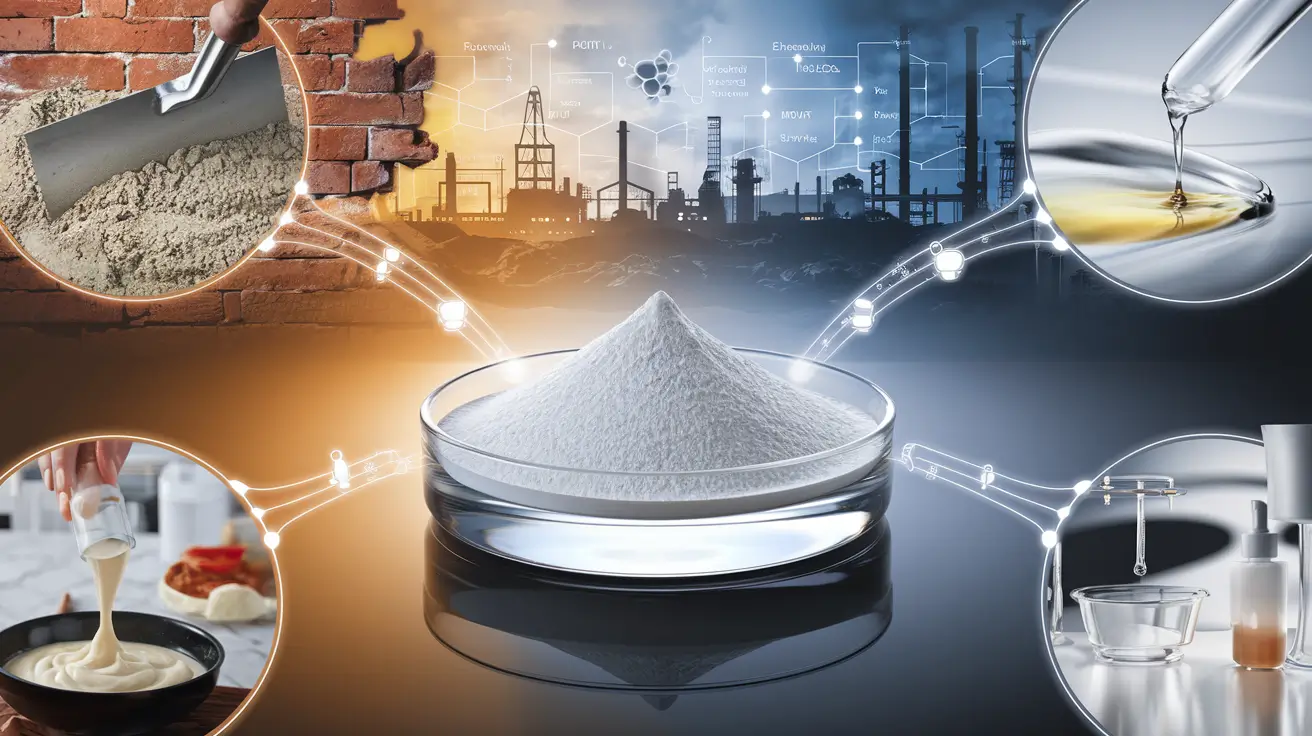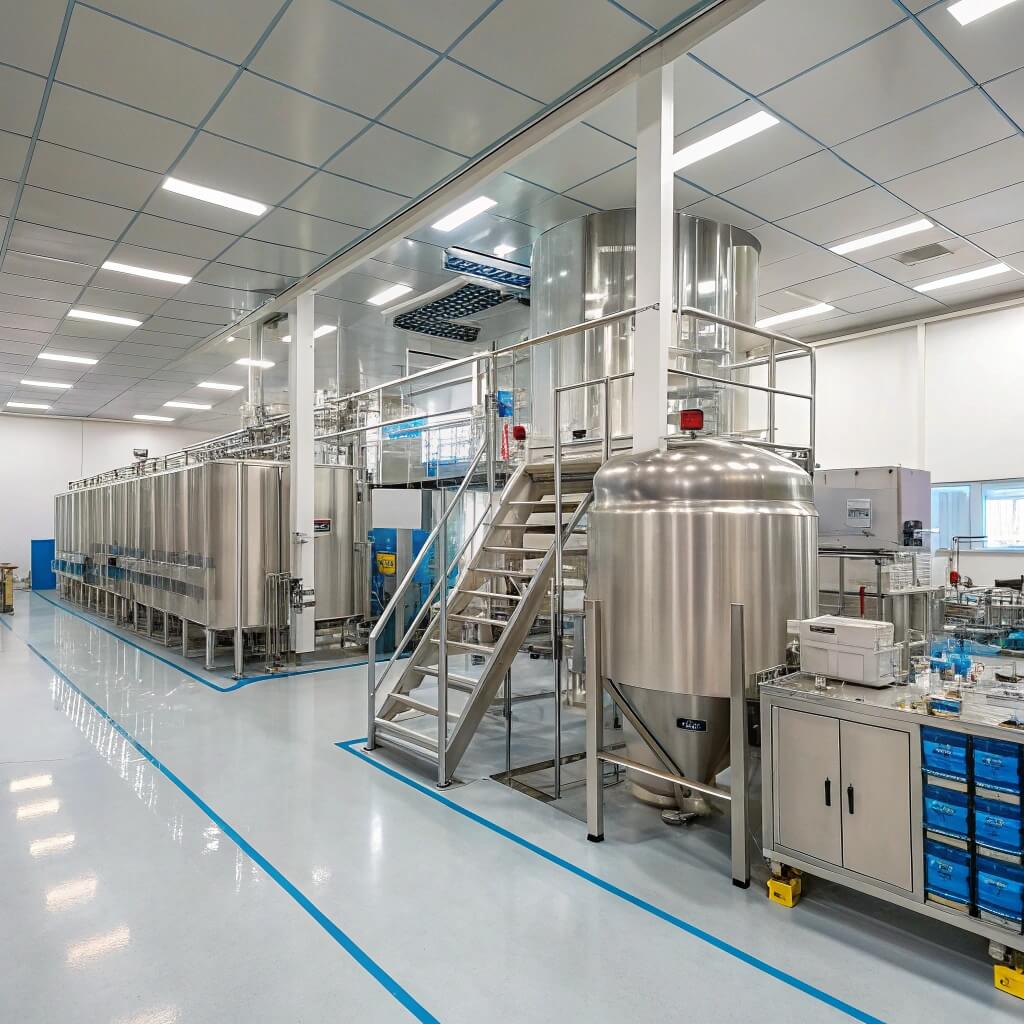In the world of Hydroxypropyl Methylcellulose (HPMC), understanding the relationship between molecular weight and hydroxypropyl content is crucial for optimizing its performance in various industrial applications. These two factors determine how HPMC behaves in formulations across sectors like construction, pharmaceuticals, and food processing. In this article, we’ll dive deep into how these properties influence HPMC’s functionality, guiding you to better understand how to select the right formulation for your needs.

1. What is HPMC and Why is it Important?
Hydroxypropyl Methylcellulose (HPMC) is a versatile, non-ionic, water-soluble polymer derived from cellulose. It’s widely used across various industries due to its remarkable properties such as viscosity modification, gelling, and film-forming. But why exactly is HPMC so essential? Well, it serves as a binder, thickener, and stabilizer in many products. In construction, it’s commonly used in mortars and tile adhesives to improve consistency and workability. In the pharmaceutical industry, it acts as a critical excipient in tablet formulations. HPMC’s ability to modify viscosity makes it an invaluable ingredient for the food industry, where it is used in food products to maintain texture and consistency.
Here’s where things get interesting—HPMC’s functionality is largely determined by its molecular weight and hydroxypropyl content. The molecular weight influences the polymer’s overall structure and performance, while hydroxypropyl content can affect its solubility, water retention, and gel formation. Together, these characteristics directly impact how HPMC will behave in a given application.
To understand HPMC’s significance, it’s crucial to realize that its properties can be tailored to fit specific needs. Whether you’re developing a new adhesive or optimizing a pharmaceutical tablet, controlling these two variables—molecular weight and hydroxypropyl content—is essential for achieving the desired product performance.
| Свойство | HPMC Role in Construction | HPMC Role in Pharmaceuticals | HPMC Role in Food Industry |
|---|---|---|---|
| Связующее | Provides consistency in tile adhesives | Used as a binder in tablets | Improves texture and consistency |
| Viscosity Modifier | Enhances workability of dry mixes | Controls release rate in tablets | Maintains product stability |
| Удержание воды | Helps in setting and drying of mortars | Improves formulation stability | Provides moisture retention in food products |
| Gel Formation | Increases thickness and stability of cement-based products | Helps in sustained release formulations | Stabilizes emulsions in food products |
2. What Role Does Molecular Weight Play in HPMC?
Molecular weight plays a significant role in determining the performance of HPMC. It refers to the size of the polymer chains that make up the HPMC molecule. The higher the molecular weight, the longer the polymer chains, which can result in higher viscosity and improved gel formation. On the other hand, lower molecular weight HPMC exhibits faster dissolution rates and can produce less viscous solutions, which may be beneficial for certain applications.
Understanding how molecular weight affects HPMC is critical when choosing the right grade for specific formulations. High molecular weight HPMC is generally used in applications requiring higher viscosity and better gel strength, such as in construction materials and certain pharmaceutical formulations. This higher viscosity helps provide greater adhesive strength and more robust consistency in the end product. Low molecular weight HPMC, however, is often preferred in situations where rapid dissolution is necessary, such as in controlled-release pharmaceutical applications or certain food products where a smoother texture is desired.
For example, in the pharmaceutical industry, high molecular weight HPMC is commonly used in sustained-release tablets because it can form a gel that controls the rate at which the active ingredient is released into the body. Meanwhile, low molecular weight grades may be used in instant dissolving tablets or syrups, where the faster dissolution of the polymer is crucial.
| Molecular Weight Grade | Диапазон вязкости | Application Examples | Преимущества |
|---|---|---|---|
| Высокий молекулярный вес | Высокий | Construction, Pharma | Greater viscosity, stronger gels |
| Низкий молекулярный вес | Низкий | Food, Pharmaceuticals | Rapid dissolution, smoother textures |
3. How Does Hydroxypropyl Content Influence HPMC Properties?
The hydroxypropyl content in HPMC plays a pivotal role in determining the solubility, water retention, and gel formation properties of the polymer. Hydroxypropylation is the process by which hydroxypropyl groups are attached to the cellulose backbone, and the amount of hydroxypropyl content directly influences HPMC’s behavior in various applications.
Hydroxypropyl content has a profound effect on the solubility of HPMC. A higher hydroxypropyl content generally leads to greater solubility in water, making it easier to incorporate HPMC into aqueous formulations. In the pharmaceutical industry, this property is important for tablet formulations, as HPMC’s solubility can control the release of active ingredients. More hydroxypropyl groups also enhance HPMC’s ability to retain moisture, which is especially useful in food products, as it helps maintain product freshness and texture.
On the other hand, a lower hydroxypropyl content results in a less soluble HPMC, which can be beneficial in applications requiring slower hydration or controlled release. This makes it a good choice for applications in construction materials, where rapid hydration is not always desirable, and the material needs to stay workable for longer periods.
To illustrate, in the food industry, HPMC with a higher hydroxypropyl content is often used in sauces, dairy products, and bakery goods to help preserve moisture and ensure a smooth consistency. In pharmaceuticals, HPMC’s hydroxypropyl content is adjusted based on the desired release profile of the drug.
| Содержание гидроксипропила | Растворимость | Application Areas | Effect |
|---|---|---|---|
| Высокий | Высокий | Pharmaceuticals, Food | Better moisture retention, increased solubility |
| Низкий | Низкий | Construction, Pharma | Controlled hydration, slower gel formation |
4. Why Do Molecular Weight and Hydroxypropyl Content Matter in Different Industries?
Molecular weight and hydroxypropyl content are crucial factors that influence how HPMC performs across various industries. Each sector has its own requirements for HPMC, and understanding these needs can help you select the right formulation. In the construction industry, for example, HPMC’s ability to improve the workability and adhesion of dry mortar is a key advantage. Higher molecular weight HPMC provides stronger bonding properties, while the hydroxypropyl content ensures optimal moisture retention, leading to better performance in tile adhesives and cement-based products.
In the pharmaceutical sector, molecular weight and hydroxypropyl content are equally important for controlling the drug release profile. For sustained-release tablets, higher molecular weight HPMC provides a controlled, slow release of the active ingredient. The hydroxypropyl content is adjusted based on how quickly or slowly the drug should dissolve in the body.
For the food industry, HPMC’s solubility and gel-forming abilities are crucial for stabilizing emulsions, thickening sauces, and maintaining the consistency of dairy and baked goods. Here, a higher hydroxypropyl content is preferred to ensure smooth textures and extended shelf life.
The relationship between these properties allows HPMC to be tailored for specific applications, ensuring that the material functions optimally, no matter the industry.
| Промышленность | Key Role of HPMC | Importance of Molecular Weight and Hydroxypropyl Content |
|---|---|---|
| Строительство | Enhances adhesion and workability | High molecular weight for bonding, hydroxypropyl for moisture retention |
| Фармацевтика | Controls drug release | Molecular weight for sustained release, hydroxypropyl for solubility |
| Пищевая промышленность | Stabilizes emulsions, thickens | Hydroxypropyl content for texture, molecular weight for consistency |
5. What are the Differences Between High and Low Molecular Weight HPMC?
High molecular weight HPMC offers several advantages in specific applications, particularly where higher viscosity and gel strength are required. This makes it ideal for use in thick formulations, such as construction materials and certain pharmaceutical applications. It provides enhanced bonding and improved product performance by increasing the viscosity and offering stronger gel formation.
On the other hand, low molecular weight HPMC is better suited for applications where rapid dissolution or faster hydration is essential. It is commonly used in food processing, where a smoother texture is preferred, or in pharmaceuticals for formulations requiring quick disintegration or immediate release of the active ingredient.
The key difference between the two lies in their viscosity. High molecular weight HPMC produces more viscous solutions, while low molecular weight grades are less viscous but dissolve more quickly. Selecting the appropriate molecular weight is essential to achieve the desired product characteristics in each application.
| Молекулярный вес | Вязкость | Лучшие приложения |
|---|---|---|
| Высокий молекулярный вес | Высокий | Construction, Sustained-release tablets |
| Низкий молекулярный вес | Низкий | Food products, Instant-release tablets |
6. How Does HPMC Viscosity Depend on Molecular Weight and Hydroxypropyl Content?
Viscosity is one of the most important properties of HPMC, and it is highly dependent on both molecular weight and hydroxypropyl content. Higher molecular weight HPMC generally leads to higher viscosity because the longer polymer chains create more resistance to flow. This increased viscosity makes it ideal for applications where thicker consistency is required, such as in tile adhesives or mortar.
Similarly, hydroxypropyl content can influence viscosity. As the hydroxypropyl content increases, the polymer becomes more water-soluble, which can result in changes in the viscosity of HPMC solutions. In some cases, higher hydroxypropyl content leads to a smoother and more uniform viscosity, which is beneficial for applications in the food and pharmaceutical industries.
Understanding how both molecular weight and hydroxypropyl content affect viscosity allows manufacturers to precisely adjust HPMC to meet specific performance requirements. Whether for construction or pharmaceuticals, controlling these variables ensures optimal viscosity and performance.
| Viscosity Type | Molecular Weight Influence | Hydroxypropyl Content Influence |
|---|---|---|
| Высокая вязкость | Higher molecular weight | Higher hydroxypropyl content increases solubility |
| Низкая вязкость | Lower molecular weight | Lower hydroxypropyl content results in slower hydration |
7. How Can You Adjust Molecular Weight and Hydroxypropyl Content for Specific Applications?
The ability to adjust the molecular weight and hydroxypropyl content of HPMC is one of the factors that makes it such a versatile material. Manufacturers can customize HPMC by adjusting these two properties to suit specific applications. For example, in the pharmaceutical industry, the molecular weight of HPMC can be selected to achieve the desired drug release rate. In the food industry, higher hydroxypropyl content is often used to create smoother textures and enhance the stability of food products.
By modifying molecular weight, manufacturers can control the thickness and flow properties of HPMC, making it more suitable for adhesives and other construction materials. Hydroxypropyl content adjustments, meanwhile, help with moisture retention, solubility, and the gel-forming properties of the polymer.
Through careful customization, manufacturers can ensure that HPMC performs optimally for each application.
| Приложение | Desired Property | Key Adjustment |
|---|---|---|
| Фармацевтика | Drug release control | Adjust molecular weight for sustained release |
| Строительство | Adhesion and thickness | Modify molecular weight and hydroxypropyl content |
| Пищевая промышленность | Texture and stability | Increase hydroxypropyl content for smoother textures |
8. What Testing Methods Are Used to Measure Molecular Weight and Hydroxypropyl Content?
Testing HPMC’s molecular weight and hydroxypropyl content is crucial for ensuring that it meets the required specifications for each application. Several techniques are employed to measure these properties, including viscosity measurements, gel permeation chromatography (GPC), and infrared spectroscopy (IR).
Viscosity measurements provide a quick and reliable way to estimate the molecular weight of HPMC by determining the solution’s resistance to flow. GPC allows for precise measurement of molecular weight distribution, offering a detailed breakdown of the polymer’s size and structure. IR spectroscopy is used to measure the hydroxypropyl content, helping to confirm the polymer’s chemical composition.
These testing methods ensure that HPMC formulations meet the required standards for their intended use, guaranteeing consistency, reliability, and high performance in every application.
| Testing Method | Measurement Focus | Преимущества |
|---|---|---|
| Viscosity Measurement | Molecular weight | Quick estimation of polymer size |
| GPC | Распределение молекулярной массы | Detailed analysis of polymer structure |
| IR Spectroscopy | Содержание гидроксипропила | Confirms chemical composition |
9. How Does the Manufacturing Process Affect Molecular Weight and Hydroxypropyl Content?
The manufacturing process is a critical factor in determining the final molecular weight and hydroxypropyl content of HPMC. Different methods of cellulose modification can lead to variations in these properties, affecting the final product’s performance. For instance, controlling the temperature and duration of the hydroxypropylation process can directly impact the amount of hydroxypropyl groups attached to the cellulose backbone.
In the same way, the process of polymerization can influence the length of the polymer chains, thereby affecting the molecular weight. The consistency of the manufacturing process is crucial for ensuring that HPMC maintains the desired properties across batches.
By monitoring and adjusting the production parameters, manufacturers can achieve precise control over the molecular weight and hydroxypropyl content, ensuring that the final product performs consistently across different applications.
| Manufacturing Factor | Effect on HPMC Properties | Importance for Consistency |
|---|---|---|
| Hydroxypropylation | Affects hydroxypropyl content | Ensures desired solubility and retention |
| Polymerization | Influences molecular weight | Controls viscosity and gel strength |
10. How Can You Select the Right HPMC for Your Specific Needs?
Selecting the right HPMC for your specific needs requires careful consideration of both molecular weight and hydroxypropyl content. For example, if you’re developing a product that requires high viscosity, such as in tile adhesives, you’ll want to choose a high molecular weight HPMC. Similarly, if your formulation requires better solubility, a higher hydroxypropyl content may be the best option.
In the food industry, selecting the right HPMC ensures that the product retains the proper texture and stability. Likewise, in pharmaceuticals, understanding the release profile of the drug will help you determine the optimal molecular weight and hydroxypropyl content for your tablet formulation.
To make an informed choice, it’s crucial to test and adjust the formulation based on your specific requirements, ensuring that the HPMC performs as expected in your application.
| Область применения | Ключевые факторы выбора | Recommended HPMC Properties |
|---|---|---|
| Строительство | Viscosity, adhesion | High molecular weight, moderate hydroxypropyl content |
| Фармацевтика | Release rate control | Controlled molecular weight, moderate to high hydroxypropyl content |
| Пищевая промышленность | Texture, moisture retention | Higher hydroxypropyl content, moderate molecular weight |
Раздел часто задаваемых вопросов
В1: Что такое ГПМЦ?
Answer: Hydroxypropyl Methylcellulose (HPMC) is a cellulose-based polymer widely used for its water-solubility and ability to modify viscosity in various applications such as construction, pharmaceuticals, and food.
В2: How does molecular weight affect HPMC’s performance?
Answer: Molecular weight affects HPMC’s viscosity and gel formation. Higher molecular weight increases viscosity, making it suitable for applications requiring thicker consistency, while lower molecular weight provides faster dissolution and smoother textures.
В3: What is the significance of hydroxypropyl content in HPMC?
Answer: Hydroxypropyl content influences HPMC’s solubility, water retention, and gel-forming capabilities. Higher hydroxypropyl content improves solubility and moisture retention, while lower content is used for slower hydration and controlled release.
В4: How can you adjust HPMC for specific industrial applications?
Answer: Adjusting HPMC involves modifying the molecular weight and hydroxypropyl content to meet the needs of specific applications. For instance, construction materials may require higher viscosity, while food products need smoother textures.
В5: What tests are used to measure HPMC’s molecular weight and hydroxypropyl content?
Answer: Common testing methods include viscosity measurements, gel permeation chromatography (GPC), and infrared spectroscopy (IR), which help determine molecular weight and hydroxypropyl content to ensure product quality and consistency.




